#argentine film
Text
Today in Film Noir / horror movie history: on November 19, 2012 El Vampiro Negro was screened at the Mar del Plata Film Festival.
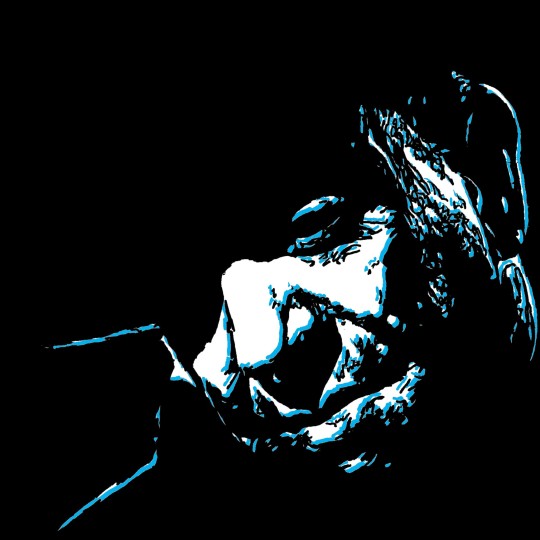



Here's some new fan art to mark the occasion!
#el vampiro negro#the black vampire#roman vinoly barreto#film noir#horror noir#50s horror#argentine film#50s noir#horror art#horror film#horror movies#horror#black and white art#black and white film#noir#movie art#art#drawing#movie history#pop art#modern art#pop surrealism#cult movies#portrait#cult film
2 notes
·
View notes
Photo

miroir
(d’après La mujer sin cabeza de Lucretia Martel)
5 notes
·
View notes
Text
El Vampiro Negro


Only a few minutes into Román Viñoly Barreto’s Argentine film noir EL VAMPIRO NEGRO (1953), you know you’re in the hands of a great director. As Amalia (Olga Zubarry) sings in a seedy, smoke-filled cabaret in Buenos Aires, Barreto cuts to images of people listening — a woman who finds her own abjection mirrored in the romantic song, men slack-jawed in hopeless adoration of the beautiful singer, couples joined in appreciation of her performance. This is the work of a humanist, which explains why his reworking of Fritz Lang’s M (1931) focuses not on the twin prongs of society, the police and the criminal underworld, closing in unavoidably on the killer, but rather on the people touched by the case. On the way to her dressing room, Zubarry witnesses the killer (Nathán Pinzón) through a basement window as he disposes of a child’s body. This puts her in the cross-hairs of the prosecutor (Roberto Escalada). When he finds out that Zubarry is a single mother, he's tempted to use his position to force her into a relationship. In place of Lang’s overt social commentary, Barreto uses décor and simple behavioral touches to distinguish the worlds of his characters. Zubarry and Pinzón live in simple rented rooms, while Escalada has a mansion where his wife (Gloria Castilla), suffering from paralysis, is just part of the high-class décor. When it’s time for lunch, he walks away and lets a servant get the woman into her wheelchair. The film has some Hollywood touches. Zubarry suffers nobly, and the long arm of coincidence throws her daughter in Pinzón’s path. But it looks amazing, with almost surrealistic night scenes (French poetic realism of the 1930s was as much an influence on film noir as was German Expressionism) shot by Anibal González Paz. There’s a very good print available on YouTube.
3 notes
·
View notes
Text
This shark documentary is insane, I'm so used to drones that I thought they had a robot to film underwater to find the Greenland Shark but no, the BBC really sent a Bri'ish guy to freeze his ass off under the Arctic ocean and get pictures of the piss shark
My respect for them has been really upgraded now.
#cosas mias#the BBC does go to insane lenghts to film beasts and creatures and I do appreciate that even as an Argentine
21 notes
·
View notes
Text
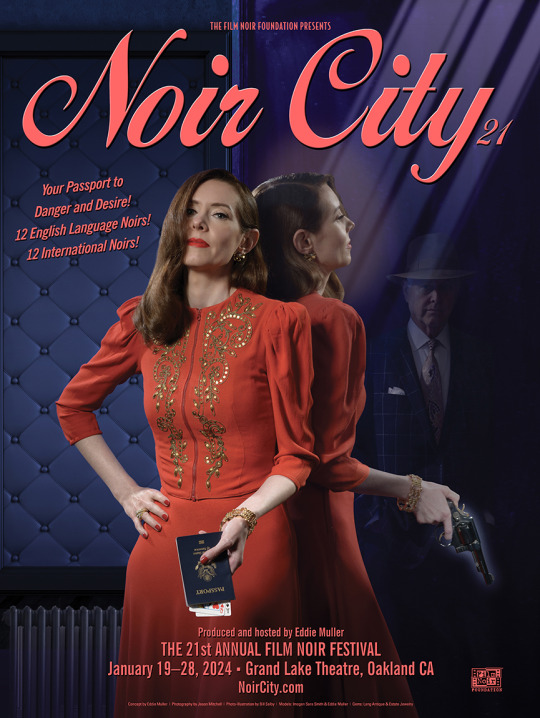
NOIR CITY 21
Celebrating its 21st year, NOIR CITY, the largest annual film noir festival in the world, returns to Oakland's Grand Lake Theatre, January 19-28, 2024. FNF president Eddie Muller will present a dozen double bills pairing an English language noir with a similarly themed foreign language film—24 films over 10 days. Whatever the country of origin, there are heists, prison breaks, missing persons, cultural alienation, love triangles, and lots of plain old-fashioned murder.
Muller says this edition "has been tailored to satisfy those folks who love noir filled with the colorful vernacular slang so essential to American and British noir—as well as adventurous viewers intrigued by seeing a familiar story—typically a crime committed for passion or profit—play out in cultures with different values, mores, and styles." Through his programming of NOIR CITY festivals around the nation and his hosting of the popular Noir Alley franchise on Turner Classic Movies, Muller aims to move audiences past the idea that film noir is a strictly American genre.
Joining him this year, as co-programmer and co-host, is acclaimed film scholar Imogen Sara Smith, a familiar commentator on The Criterion Channel streaming service. "Attending NOIR CITY in the Bay Area has been a highlight of my year for over a decade," says Smith, "and I'm thrilled to be joining Eddie as co-host this year. I'm especially excited that the program we've put together will introduce audiences to some rare international titles, alongside Hollywood classics. It's going to be a stellar festival."

Kicking off the collection of rarities is the FNF's most recent restoration — 1952's Argentine film Never Open That Door (No abras nunca esa puerta) — based on two short stories by American master of suspense fiction, Cornell Woolrich. The picture was preserved by the Film Noir Foundation in 2013 and has now been completely restored by the FNF through UCLA Film & Television Archive, thanks in part to a grant from the Golden Globe Foundation (formerly HFPA). Fernando Martín Peña, Argentina's pre-eminent cinephile, will be on hand to introduce the film with Eddie Muller.
Included on the 2024 schedule are English-language rarities such as Black Tuesday (1954), Plunder Road (1957), Across the Bridge (1957), and Strongroom (1962). Little-seen international titles include The Human Beast (France, 1938), Aimless Bullet (South Korea, 1960), Bitter Rice (Italy, 1949), Four Against the World (Mexico, 1950), Zero Focus (Japan, 1961), and Smog (1962), a forgotten surrealist masterpiece by Italian director Franco Rossi freshly restored by UCLA Film & Television Archive. Explore the full line up, buy tickets for individual double features and Passports (All-Access Passes) at the festival website.
GO TO NOIR CITY
#noir city#film noir foundation#eddie muller#film restoration#noir city 21#noir city oakland#grand lake theatre#imogen sara smith#Argentine film noir#35mm screening#film noir festival#never open that door#cornell woolrich#Martín Peña#tcm#noir alley#criterion channel#No abras nunca esa puerta
20 notes
·
View notes
Text
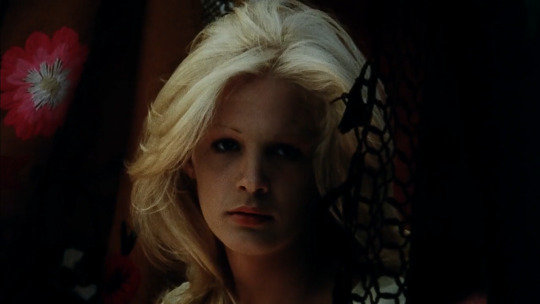


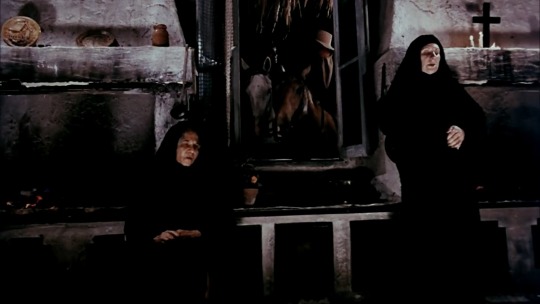



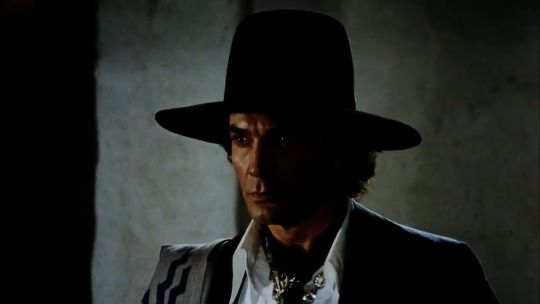

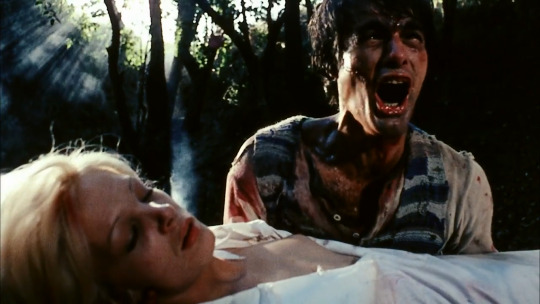
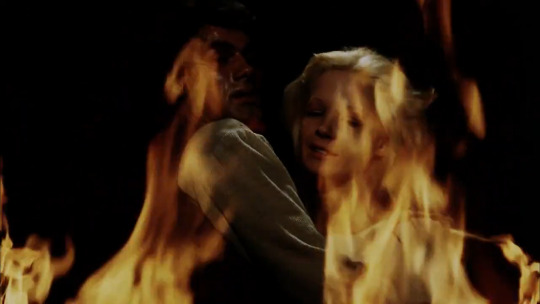
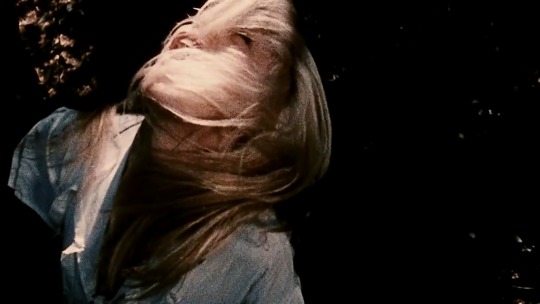
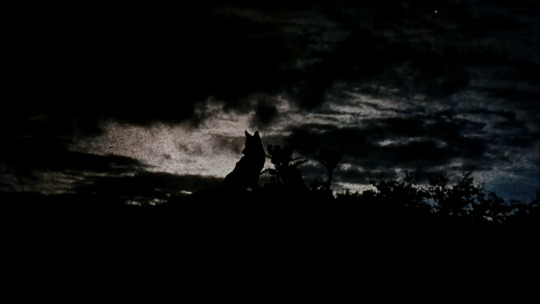
Movie: Nazareno Cruz y el lobo (Nazareno Cruz and the Wolf)
Director: Leonardo Favio
Year: 1975
Country: Argentina
Genre: Horror
"Nazareno Cruz is a young Gaucho living in a rural town. He is known for being the seventh son of his father, and so he is seen by the locals as the victim of the werewolf curse. Despite this he lives happily in the community. When Nazareno is about to turn 18 he meets Griselda and they both fall in love. Soon after, "Mandinga" (the Devil) presents himself to Nazareno and explains that his curse is real. Mandinga makes Nazareno a proposition: if Nazareno gives up his love, he will receive in exchange his freedom and many riches. Nazareno refuses the deal and eventually turns into a werewolf, becoming involved in a series of tragedies."
#argentine cinema#leonardo favio#nazareno cruz and the wolf#arthouse horror#nazareno cruz y el lobo#films#movies#cinema#horror movies#horror#horror films#arthouse cinema#art films#argentina#world cinema#pelicula
25 notes
·
View notes
Text

GRETE STERN / “DREAM N° 32” / 1949
[gelatin silver print on paper | 30 × 24 cm.]
#grete stern#surrealism#surreal#black and white#modern art#film photography#analog#monochrome#40s#german-argentine#photography#u
25 notes
·
View notes
Text
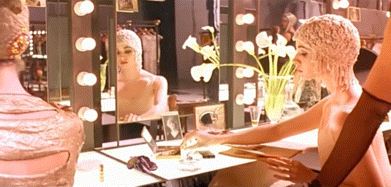
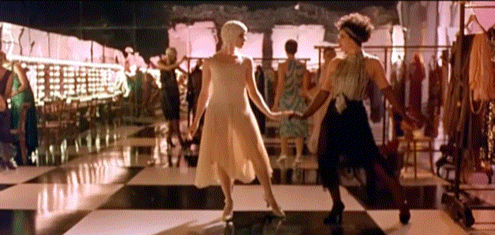








Tango entre féminas (Tango Between Women)
Danced by the talented and beautiful Cecilia Narova (in black) and Mía Maestro (in white)
Scene for the Spanish movie Tango, no me dejes nunca (1998) or simply Tango (1998) to international audiences, written and directed by Carlos Saura, and filmed by award-winning cinematographer Vittorio Storaro, best known for his work in The Last Emperor (1987) and Apocalypse Now (1979), and choreographed by Juan Carlos Copes.
#tango#tango 1998#mia maestro#cecilia narova#argentine tango#dance#latin dance#latin american dance#spanish film#carlos saura#dance film#tango between women#female tango#lesbian#tango queer#lqbtq#tango no me dejes nunca#argentinian film#argentina
160 notes
·
View notes
Text
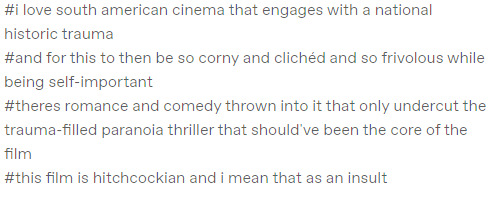
white person from the netherlands saying all this.... oh fuck off. i dont even like the movie THAT much but like why do you as a dutch person need minority cinema to be revelatory/masterful to be worth talking about whatsoever
#i would be petty and post their fave director list but let me choose love and kindness amen#but like asking for an argentine film to be a political masterwork and 100% serious when some of your fave directors are. well...
14 notes
·
View notes
Text



Camila 1984 director Maria Luisa Bemberg
14 notes
·
View notes
Text
On January 31, 2014 El Vampiro Negro was screened at Noir City.

#el vampiro negro#el vampiro negro 1953#the black vampire#roman vinoly barreto#noir film#film noir#film noir movies#horror art#horror movies#horror film#horror#black and white art#black and white film#noir#50s noir#argentine film#art#pop art#modern art#portrait#movie fan art#cult movie art#movie art#movie history#gator
1 note
·
View note
Text
Sometimes when I listen to music I have this recurring daydream of me making a film and having whatever song I'm listening to as either the opening or closing theme of the film, but the film itself is plotless bc I haven't come up with the plot yet lmao.
#if i were to make a film it would probably be very heavily inspired by a0 but more argentine and probably full of 80s hits#and have luis ziembrowski as the lead jsjsj#.txt
2 notes
·
View notes
Text
Terrified

Usually when you can identify the other movies that inspired a horror film, it’s the imitation that looks tawdry in comparison. That’s not the case with Demian Rugna’s Argentine TERRIFIED (2017, Shudder, On Demand). This tale of a haunted street owes a debt to the episodic narrative of JU-ON (2002) and the domestic terrors of PARANORMAL ACTIVITY (2007) and INSIDIOUS (2010) but manages to improve on its sources. I’m tempted to say it’s the film INSIDIOUS thinks it is. It opens with a great jump scare. A woman working in her kitchen hears something coming from the drain. She bends closer to listen as the camera moves in on the drain, and suddenly water hits the sink. It’s simply her turning on the tap to see if that will end the noises (it doesn’t), but it’s a definite jolt for the viewer. Later we get one of the few bloody scenes in the movie when something throws her around her bathroom as her husband watches in horror. When the police question him, they compare notes on other strange occurrences on his street. One neighbor’s furniture moves around as he sleeps, and a dead child returns from the grave simply to sit in his kitchen, immobile unless you turn away. That sets up a powerful theme, the queering of the domestic by supernatural forces. Were the plot to follow through with that, it would be one of the great horror films. Instead, however, the coroner and chief detective join two paranormal researchers to move into the houses and investigate. What follows is very good, but it loses the sense of an attack on our most sacred and private spaces. Still, Rugna balances the few jump scares with a sense of queasiness as the investigators realize that things aren’t always what they seem. TERRIFIED traffics in intelligent, truly unsettling scares and could have you looking at your home with more than a bit of dread, particularly if you’re streaming it in what you think is your safe place.
1 note
·
View note
Text
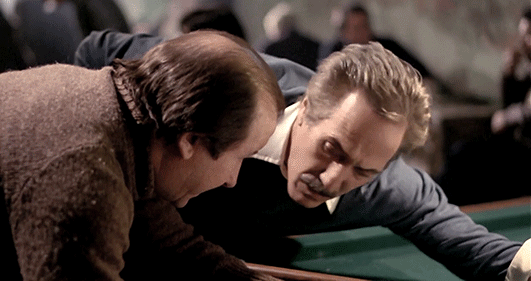
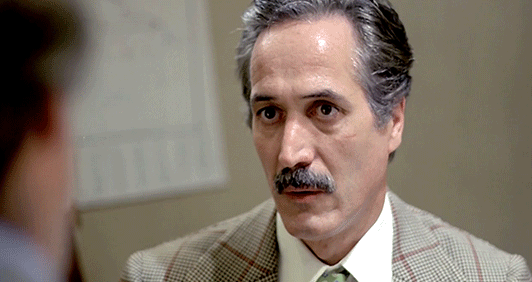




Tiempo de Revancha (1981) dir. Adolfo Aristarain
October film diary: 14/22
#filmedit#tiempo de revancha#1980s#80s films#filmblr#film gifs#Tiempo de Revancha (1981)#Time for Revenge (1981)#drama film#crime film#20th century argentine cinema#federico luppi#haydée padilla#adolfo aristarain#argentine cinema#latin american cinema#1981#my gifs: hyperfixationsarchive
13 notes
·
View notes
Text
FNF president Eddie Muller will introduce the restoration of the Film Noir Foundation’s latest discovery from Argentina, “Never Open That Door” (“No abras nunca esa puerta,” 1952)
#eddie muller#noir alley#film noir foundation#film noir#argentine noir#never open that door#No abras nunca esa puerta
10 notes
·
View notes
Photo



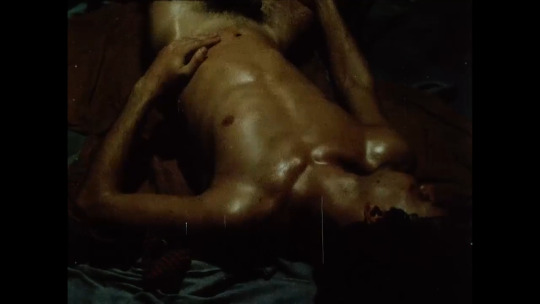
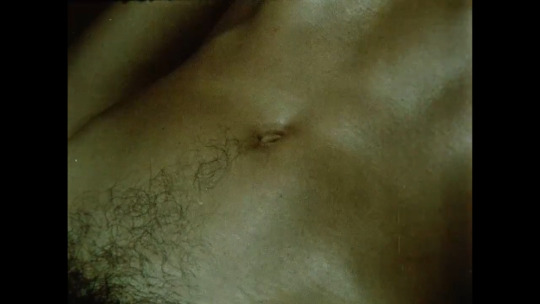
Habeas Corpus. Jorge Acha. 1986
#habeas corpus#jorge acha#80s#cine argentino#argentine cinema#lgbtq#queer#avant garde#experimental film#cinema#poetry#art
13 notes
·
View notes